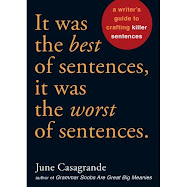"I've recently been told it's wrong to start a sentence with numerals; i.e. "5235 Western Road was a big blue house..."
Who are these schmucks running around playing fast and loose with the W word — "wrong" —and thereby messing with the heads of writers seeking simple, useful guidelines? Why is it that, in a culture that is so profoundly immune to facts (Bill O'Reilly could say the stock market hit 13,000 today but the liberal media is lying about it and many would believe him; the Washington Post could run a cover story saying Obama is funneling money to a funnel manufacturer and some would simply dismiss it as a lie), people take language/grammar hearsay as gospel?
These things are not a matter of right and wrong. They're a matter of style. AP says to write out numbers at the beginnings of sentences, except when they're years.
"Twenty-three children will graduate JoJo's dance class in 2021"
"2021 should be an interesting year."
Chicago doesn't share AP's view that there should be an exception for years. At the beginning of a sentence, you still spell out the year, per Chicago.
"Twenty-three children will graduate JoJo's dance class in 2021," BUT
"Twenty twenty-one should be an interesting year."
For anyone looking for a simple guideline: Yes. It's probably best to avoid numerals at the beginnings of sentences. But that's just because two major style guides prefer it. Not because of issues of "right" and "wrong."





2 comments:
Okay, since it all comes back to teaching for me, this is something I struggle with (especially in our day and age of scripted curriculum with only "correct" answers): Style is subjective. Style matters based on your audience. Style is not grammar.
I try to explain it to my students as "there are some folks who's job it is to tell us that your name goes on the right side of the paper, double-spaced, and so we do it that way," but it still doesn't get through their head that that's only one way of doing it.
Somewhere, somehow, we need to get away from the "correct" answer and on to the most thoughtful one.
For me, the quintessential example, the one that really drives it home to people, is a comparison of three different style guides' advice on how to make possessives of words ending in S.
I charted 'em here.
Post a Comment